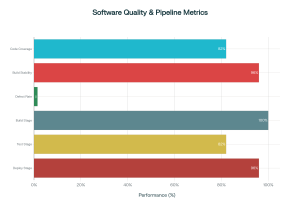User Acceptance Testing (UAT) is a pivotal phase in software quality assurance, delivering critical validation that business requirements and user needs have been met before go-live. Industry leaders emphasize that setting clear entrance and exit criteria, prioritizing real-world scenarios, and optimizing feedback channels are fundamental to achieving positive outcomes in UAT cycles.
Establishing Clear Criteria and Realistic Scenarios
Top QA directors agree that explicitly defining entrance and exit benchmarks for UAT pilot groups streamlines prototype approvals and project momentum. Successful teams use dashboards and onboarding guides to communicate minimal conditions for progress, minimizing miscommunication and delays. Scenario mapping with business owners—rather than relying on generic test libraries—significantly reduces bug rates, ensuring the UAT process reflects true operational flows and stakeholder priorities.
Streamlined Bug Reporting and Real-Time Feedback
Today’s QA leaders recommend integrating bug reporting directly into preview builds, enabling instant tracking and frictionless issue submission. Modern feedback widgets convert actionable input at much higher rates than traditional spreadsheet-based methods. Teams benefit from centralized dashboards and automated alerts, increasing alignment and transparency across functions.
UAT Fundamentals: Scope, Preparation, and Collaboration
Comprehensive preparation is essential—precisely defined scope and scenario coverage prevent defects from leaking into production. Engaging business users and subject-matter experts early in the scenario design ensures the system is assessed under realistic conditions. Executing explicit walkthroughs and leveraging collaborative online platforms enable rapid iterations and measurable sign-off, while support resources are allocated to resolve incidents during sessions rather than after.
Key Objectives and Stakeholder Alignment
Early agreement between project teams and business representatives drives the success of UAT cycles. Measurable goals—like scenario coverage, incident discovery rates, and process conformance—are set from the start. Teams map workflows documenting both functional and non-functional requirements, including mobile compatibility and compliance. This clarity avoids redundant overlaps with integration or technical testing, focusing exclusively on business validation.
Empowering End Users and Feedback Channels
Leading companies actively involve end users in scenario workshops, onboarding with clear instructions and stepwise checklists. Direct communication tools such as live chat boards and structured response forms accelerate bug resolution and promote meaningful engagement. Rotating test audiences and offering recognition mechanisms boost participation rates, while satisfaction metrics are tracked immediately following each cycle for continuous improvement.
Overcoming UAT Challenges
Maintaining high stakeholder engagement is crucial—requires scheduling mandatory evaluation windows and tracking attendance. Explicit pass/fail criteria, connected defect logs, and standardized test environments reduce ambiguity and miscommunication risks. Integrated dashboards and automated provisioning eliminate duplicate bug reports and environmental inconsistencies, ensuring smooth testing cycles and actionable feedback for all involved.
UAT Tools and Technologies in 2025
Specialized platforms such as Zephyr, TestRail, and crowd-powered solutions like Testlio streamline scenario management and defect tracking. Real-time collaboration via tools like Teams, Slack, or Confluence speeds up issue resolution, while containerized environments managed with Docker or AWS CloudFormation maintain production parity. Automated evidence collection tools and browser plugins further centralize review cycles for optimal transparency and accountability.
Implementing Successful UAT Strategies
Aligning business goals with concrete verification scenarios ensures that critical workflows are validated, defect rates decline, and stakeholder satisfaction rises. Continuous feedback loops, iterative script refinement, and transparent measurement—using KPIs like defect density, requirement coverage, pass rate, and satisfaction scores—deliver actionable insights and enhanced readiness for enterprise deployment.
Training and Support for Test Participants
Structured onboarding, microlearning tutorials, and dedicated support channels prepare participants to report issues accurately and efficiently. Updated, scenario-based documentation and randomized training groups improve responsiveness and coverage across diverse feature sets, matching fast-paced CI/CD deployment cycles in 2025.
Read more such articles from our Newsletter here.



